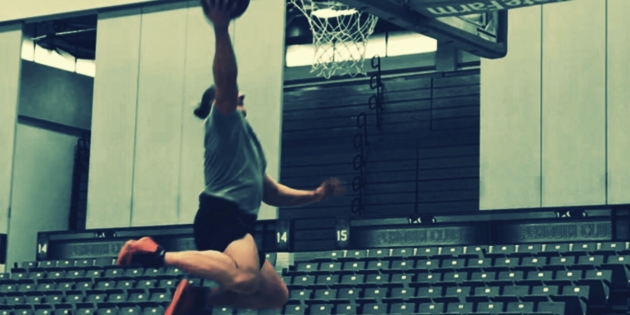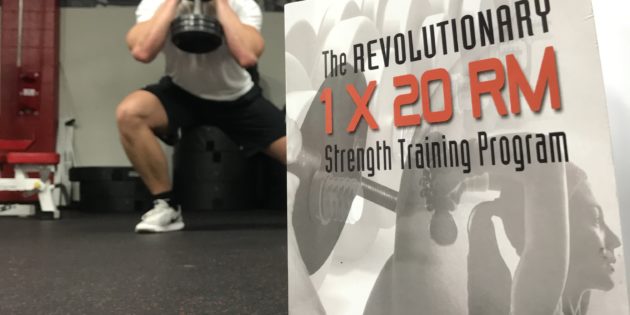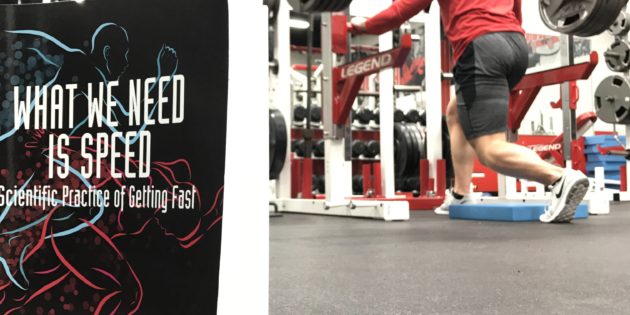Muscle Remembers: Why Gains Come Back Easy After Time Off

If you take time away from lifting, what will happen to your gains? And when you get back to training, how long will it take to get your muscle back? Researchers at Keele University looked into these questions. Hypothesis Skeletal muscle ‘remembers’ periods of muscle growth, making it easier to gain back muscle after taking time…
How to Get Fast Twitch Muscle: Rest

Humans have two basic types of muscle fibers – Type I (Slow twitch) and Type II (Fast Twitch). Type II fibers are further separated into Type IIa (producing high power/fast twitch) and Type IIx (producing the highest power/fastest twitch). If you want to jump higher, sprint faster, and be overall more explosive, you need to:…
JACKEDTHLETE – High Frequency Training

JACKED [jakt] adjective – (of a person) having very well-developed muscles. ATHLETE [ˈaTHˌlēt] noun – a person who is proficient in sports and other forms of physical exercise. JACKEDTHLETE is meant for competitive athletes desiring both the physical development to compete at a high level (strength, explosiveness, etc.) paired with juicy muscularity (“look good to…
Instantly Jump Higher and Lift Heavier: Post-Activation Potentiation

Potentiation. Noun. The increase in strength of nerve impulses along pathways that have been used previously, either short-term or long-term. You spend months trying to jump higher and increase strength numbers. What if you could be stronger and more explosive every time you entered the gym? Enter Post-Activation Potentiation (PAP): PAP is the phenomenon by which…
20 Takeaways: Strength Training and Coordination: An Integrative Approach

My key points from “Strength Training and Coordination: An Integrative Approach” by Frans Bosch: 1. Coordination must be taken into account during strength training “Most literature about strength training is highly mechanical in its approach, and Isaac Newton seems to have contributed more to strength training theory than all the neurophysiologists in history.” “Coordination at…
10 Takeaways: The 1×20 Method

My key points from “The Revolutionary 1 x 20 RM Strength Training Program” by Dr. Michael Yessis: 1. The 1×20 Method is effective for youth or beginner athletes. The body adapts more readily to lower intensity strength exercises (greater growth and development of the muscles, joints, and support structures without fatigue and chance of injury).…
10 Takeaways: What We Need is Speed

My key points from “What We Need is Speed: Scientific Practice of Getting Fast” by Henk Kraaijenhof: 1. “Try to find the right program for your athlete, not the right athlete for your program.” “Some athlete’s superfood might be other athlete’s poison.” 2. Sprint performance depends on the T-factors: Talent (genetic predisposition), Training, Temperature (need…
How I Squatted 500 and Deadlifted 600: Reflexive Performance Reset

You don’t know what you don’t know – Douglas Heel My body has seen its share of setbacks: Chronic Achilles tendonitis, patellar tendonitis, low back pain, a fractured collarbone, and too many groin strains and ankle sprains to count. After high school athletics, walking on to play college basketball was out of the question.…
Olympic Lifts Don’t Optimize Explosive Power

Paradigm shift. Noun: A fundamental change in approach or underlying assumptions. Before I start, it’s imperative to understand power. Power is the product of strength and speed [18]. Generating high power outputs is one of the most important qualities an athlete can possess [8, 15, 18] as it largely determines explosive athletic performance [21]. For…
How to Jump Higher: Eccentric Training

Paradox. Noun: a seemingly absurd or self-contradictory statement or proposition that when investigated or explained may prove to be well founded or true. As a young basketball player, my dream was to dunk a basketball. During high school, I experimented with vertical jumping programs. After years of hard training, I was disappointed – I still…


